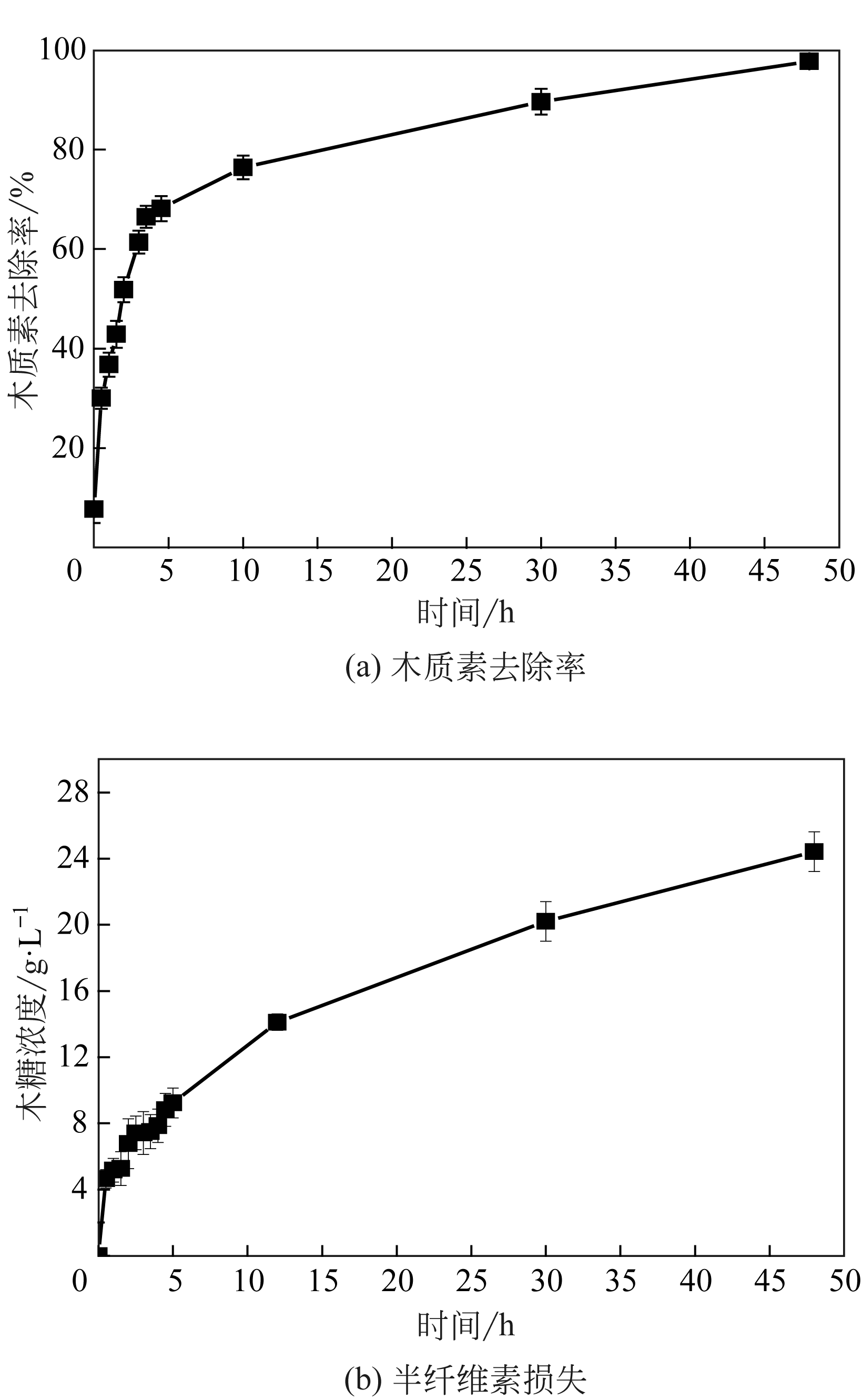| 1 |
邓京波. 杜邦公司世界最大的纤维素乙醇工厂开工[J]. 石油炼制与化工, 2016, 47(4): 29.
|
|
DENG J B. The starting work of DuPont, the world's largestcellulosic ethanol factories[J]. Petroleum Processing and Petrochemicals, 2016, 47(4): 29.
|
| 2 |
徐湖仪, 燕思琪, 刘爽, 等., 关于秸秆利用的综合探讨[J]. 对外经贸, 2019(2): 129-130.
|
|
XU H Y, YAN S Q, LIU S, et al. Comprehensive discussion on straw utilization[J]. Foreign Economic Relations & Trade, 2019(2): 129-130.
|
| 3 |
ZHAO X B, ZHANG L H, LIU D H. Biomass recalcitrance. Part I: The chemical compositions and physical structures affecting the enzymatic hydrolysis of lignocellulose[J]. Biofuels, Bioproducts and Biorefining, 2012, 6(4): 465-482.
|
| 4 |
陈洪章, 马力通. 生物质产业关键技术突破与产业前景[J]. 工程研究, 2012, 4(3): 237-244.
|
|
CHEN H Z, MA L T. The key technology breakthrough and industry prospects of biomass[J]. Journal of Engineering Studies, 2012, 4(3): 237-244.
|
| 5 |
陈洪章, 邱卫华, 邢新会, 等. 面向新一代生物及化工产业的生物质原料炼制关键过程[J]. 中国基础科学, 2009, 11(5): 32-37.
|
|
CHEN H Z, QIU W H, XING X H, et al. The key process of biomass refining for a new generation of biological and chemical industry[J]. China Basic Science, 2009, 11(5): 32-37.
|
| 6 |
XU J K, SUN R C. Recent advances in alkaline pretreatment of lignocellulosic biomass[M]//Biomass Fractionation Technologies for a Lignocellulosic Feedstock Based Biorefinery, 2016: 431-459.
|
| 7 |
杨为华, 李凤和. 常压法秸秆预处理技术研究进展[J]. 化工进展, 2017, 36(3): 873-880.
|
|
YANG W H, LI F H. Research progress on pretreatment techniques of straw at atmospherics pressure[J]. Chemical Industries and Engineering Progress, 2017, 36(3): 873-880.
|
| 8 |
WEN J L, XIAO L P, SUN Y C, et al. Comparative study of alkali-soluble hemicelluloses isolated from bamboo (Bambusa rigida)[J]. Carbohydrate Research, 2011, 346(1): 111-120.
|
| 9 |
Edwin VAN DER POL, BAKKER Rob,ZEELAND Alniek VAN, et al.Analysis of by-product formation and sugar monomerization in sugarcane bagasse pretreated at pilot plant scale: differences between autohydrolysis, alkaline and acid pretreatment[J]. Bioresource Technology, 2015, 181: 114-123.
|
| 10 |
KESHWANI Deepak R, CHENG Jay J. Modeling changes in biomass composition during microwave-based alkali pretreatment of switchgrass[J]. Biotechnology and Bioengineering, 2010, 105(1): 88-97.
|
| 11 |
YAO R S, HU H J DENG S S, et al. Structure and saccharification of rice straw pretreated with sulfur trioxide micro-thermal explosion collaborative dilutes alkali[J]. Bioresource Technology, 2011, 102(10): 6340-6343.
|
| 12 |
LI F H, YAO R S, WANG H, et al. Process optimization for sugars production from rice straw via pretreatment with sulfur trioxide micro-thermal explosion[J]. Bioresources, 2012, 7(3): 3355-3366.
|
| 13 |
李凤和. 基于三氧化硫微热爆法预处理稻草秸秆的过程和优化研究[D]. 合肥: 合肥工业大学, 2012.
|
|
LI F H. Process optimization for sugars production from rice straw via pretreatment with sulfur trioxide micro-thermal explosion [D]. Hefei: Hefei University of Technology, 2012.
|
| 14 |
WANG H, PAN C Y, XU F, et al. Enhanced saccharification for wheat straw with micro-thermal explosion technology of in situ SO3 reaction[J]. Chemical Engineering Journal, 2016, 284: 394-399.
|
| 15 |
DONG Z J, LI F H, WANG H, et al. Structure and saccharification of corn stover pretreated with sulfur trioxide micro-thermal explosion and dilute alkali (STEX-DA)[J]. Bioresources, 2018, 13(3): 5271-5288.
|
| 16 |
胡华佳, 姚日生, 邓胜松, 等. 液处理稻草秸秆酶解糖化的研究[J]. 安徽化工, 2010, 36(S1): 37-39, 24.
|
|
HU H J, YAO R S, DENG S S, et al. Enzymatic hydrolysis saccharification of rice straw pretreated with ultrasonic wave collaborative dilutes alkali[J]. Anhui Chemical Industry, 2010, 36(S1): 37-39, 24.
|
| 17 |
ZHENG J, CHOO Kim, REHMANN Lars. The effects of screw elements on enzymatic digestibility of corncobs after pretreatment in a twin-screw extruder[J]. Biomass and Bioenergy, 2015, 74: 224-232.
|
| 18 |
ZHANG Y Q, MA D K, ZHUANG Y, et al. One-pot synthesis of N-doped carbon dots with tunable luminescence properties[J]. Journal of Materials Chemistry, 2012, 22(33): 16714-16718.
|
| 19 |
YANG Z X, LIU M H, HE Y, et al. Nitrogen-doped, carbon-rich, highly photoluminescent carbon dots from ammonium citrate[J]. Nanoscale, 2014, 6(3): 1890-1895.
|
| 20 |
NAN Y F, JIA L L,YANG M X, et al. Simplified sodium chlorite pretreatment for carbohydrates retention and efficient enzymatic saccharification of silvergrass.[J]. Bioresource Technology, 2018, 261: 223-231.
|
| 21 |
JU X H, ENGELHARD Mark, ZHANG X. An advanced understanding of the specific effects of xylan and surface lignin contents on enzymatic hydrolysis of lignocellulosic biomass[J]. Bioresource Technology, 2013, 132: 137-145.
|
 ), Shengsong DENG, Huai WANG, Risheng YAO(
), Shengsong DENG, Huai WANG, Risheng YAO( )
)






